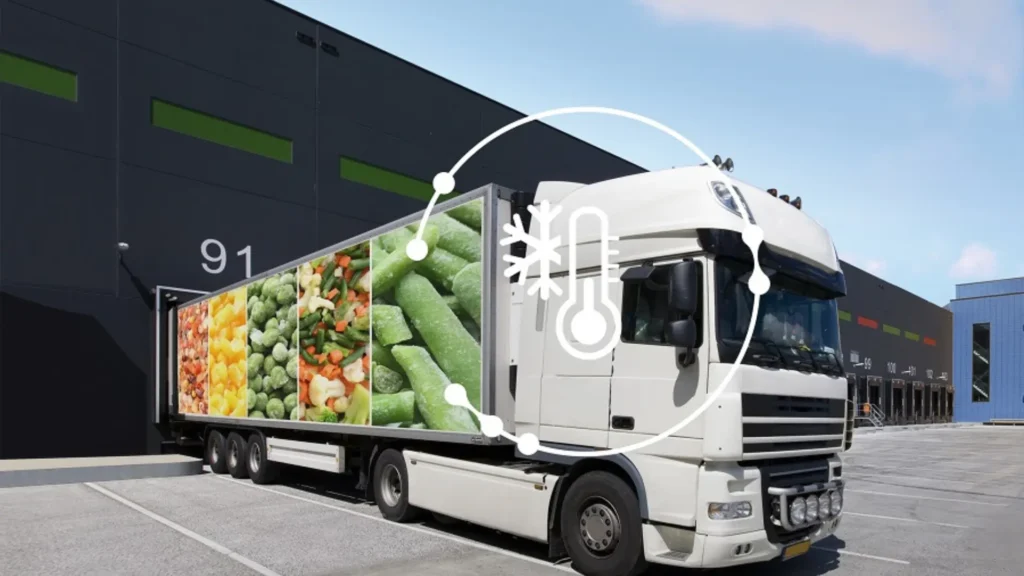
Practices for Transporting Perishable Goods
Transporting perishable goods, whether it’s fresh produce, pharmaceuticals, or delicate flowers, demands meticulous planning and execution. Any lapse in temperature control, handling, or timing can lead to spoilage, loss, and dissatisfied customers. To ensure the safe and efficient delivery of these sensitive products, adhering to best practices is crucial.
Temperature Control is Paramount
Precise Temperature Monitoring
- Utilize temperature monitoring devices (data loggers, sensors) to track conditions throughout the journey.
- Implement real-time alerts to notify stakeholders of any deviations from the required temperature range.
Appropriate Refrigeration
- Select refrigerated vehicles (reefers) that maintain consistent temperatures.
- Ensure proper insulation and airflow within the vehicle.
- Pre-cool vehicles before loading to stabilize the environment.
Packaging
- Use insulated containers, gel packs, or dry ice to maintain product temperature.
- Choose packaging materials that provide adequate protection and ventilation.
Proper Handling and Loading
Minimize Handling
- Reduce the number of times perishable goods are handled to minimize the risk of damage.
- Use specialized equipment (forklifts, conveyors) to facilitate efficient loading and unloading.
Proper Loading Techniques
- Ensure proper airflow around products by using dunnage and spacing techniques.
- Distribute weight evenly to prevent shifting during transit.
- Secure cargo to prevent movement and damage.
Sanitation
- Clean and sanitize vehicles and equipment regularly to prevent contamination.
- Maintain a hygienic environment throughout the transportation process.
Efficient Routing and Scheduling
Optimize Routes
- Plan routes to minimize transit time and avoid delays.
- Utilize route optimization software to find the most efficient paths.
- Consider traffic patterns, weather conditions, and road closures.
Timely Delivery
- Establish realistic delivery schedules and adhere to them.
- Communicate with customers about delivery timelines and potential delays.
- Prioritize time-sensitive deliveries.
Contingency Planning
- Have a plan in place for if delays occur, or if a vehicle breaks down.
- Make sure that you have contact information for everyone involved in the delivery.
Documentation and Compliance
Accurate Documentation
- Maintain accurate records of temperature, handling, and delivery information.
- Ensure compliance with all relevant regulations and industry standards.
- Keep proper bills of lading and other necessary paperwork.
Regulatory Compliance
- Adhere to food safety regulations (e.g., FSMA) and pharmaceutical regulations (e.g., GDP).
- Obtain necessary permits and certifications for transporting perishable goods.
- Be aware of any country-specific rules when shipping internationally.
Communication and Collaboration
Clear Communication
- Maintain clear communication with all stakeholders, including suppliers, carriers, and customers.
- Provide regular updates on shipment status and any potential issues.
Collaboration
- Foster collaboration between all parties involved in the transportation process.
- Share information and best practices to ensure a smooth and efficient delivery.
Customer Feedback
- Obtain customer feedback about the delivery process, and use that information to improve future deliveries.
Technology Integration
IoT and Tracking
- Implement IoT sensors and GPS tracking to monitor shipment conditions in real-time.
- Utilize data analytics to identify trends and optimize processes.
Supply Chain Visibility
- Use supply chain management systems to enhance visibility and control.
- Integrate systems to streamline data sharing and communication.
By adhering to these best practices, businesses can minimize the risks associated with transporting perishable goods and ensure the safe and timely delivery of these critical products.






